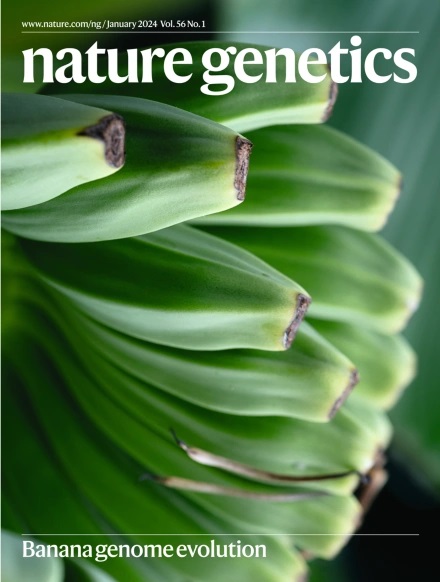KDM4C抑制通过促进组织蛋白酶l介导的组蛋白H3切割来阻止基底乳腺癌的肿瘤生长
IF 31.7
1区 生物学
Q1 GENETICS & HEREDITY
引用次数: 0
摘要
基底乳腺癌是一种预后不良的亚型,需要更有效的治疗方法。在这里,我们描述了KDM4C组蛋白赖氨酸去甲基化酶在KDM4C扩增的基底乳腺癌中的独特作用,其中KDM4C抑制重塑染色质和转录组学格局,而不会实质性改变其典型底物,三甲基化组蛋白H3赖氨酸9 (H3K9me3)和赖氨酸36 (H3K36me3)。相反,KDM4C的丢失导致组织蛋白酶L (CTSL)介导的组蛋白H3的蛋白水解裂解,导致谷氨酸-半胱氨酸连接酶表达降低和活性氧增加。KDM4C抑制后,GRHL2转录因子在赖氨酸453位点甲基化,触发CTSL组蛋白剪切活性,CTSL通过GRHL2转录因子募集到染色质上。CTSL的缺失挽救了kdm4缺失介导的肿瘤抑制。我们的研究揭示了KDM4C连接细胞氧化还原调节和染色质重塑的功能。本文章由计算机程序翻译,如有差异,请以英文原文为准。


KDM4C inhibition blocks tumor growth in basal breast cancer by promoting cathepsin L-mediated histone H3 cleavage
Basal breast cancer is a subtype with a poor prognosis in need of more effective therapeutic approaches. Here we describe a unique role for the KDM4C histone lysine demethylase in KDM4C-amplified basal breast cancers, where KDM4C inhibition reshapes chromatin and transcriptomic landscapes without substantial alterations of its canonical substrates, trimethylated histone H3 lysine 9 (H3K9me3) and lysine 36 (H3K36me3). Rather, KDM4C loss causes proteolytic cleavage of histone H3 mediated by cathepsin L (CTSL), resulting in decreased glutamate–cysteine ligase expression and increased reactive oxygen species. CTSL is recruited to the chromatin by the grainyhead-like 2 (GRHL2) transcription factor that is methylated at lysine 453 following KDM4C inhibition, triggering CTSL histone clipping activity. Deletion of CTSL rescued KDM4-loss-mediated tumor suppression. Our study reveals a function for KDM4C that connects cellular redox regulation and chromatin remodeling. KDM4C regulates cathepsin L-mediated histone H3 N-terminal tail clipping through grainyhead-like 2 (GRHL2) methylation in breast cancer. This link between the cellular redox state and chromatin remodeling might represent a therapeutic target in KDM4C-amplified tumors.
求助全文
通过发布文献求助,成功后即可免费获取论文全文。
去求助
来源期刊

Nature genetics
生物-遗传学
CiteScore
43.00
自引率
2.60%
发文量
241
审稿时长
3 months
期刊介绍:
Nature Genetics publishes the very highest quality research in genetics. It encompasses genetic and functional genomic studies on human and plant traits and on other model organisms. Current emphasis is on the genetic basis for common and complex diseases and on the functional mechanism, architecture and evolution of gene networks, studied by experimental perturbation.
Integrative genetic topics comprise, but are not limited to:
-Genes in the pathology of human disease
-Molecular analysis of simple and complex genetic traits
-Cancer genetics
-Agricultural genomics
-Developmental genetics
-Regulatory variation in gene expression
-Strategies and technologies for extracting function from genomic data
-Pharmacological genomics
-Genome evolution
 求助内容:
求助内容: 应助结果提醒方式:
应助结果提醒方式:


